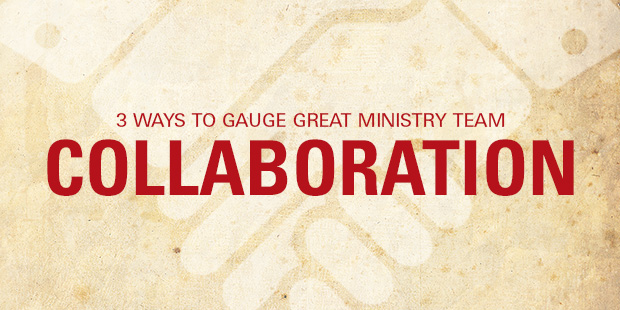
3 Ways to Gauge Great Ministry Team Collaboration
Collaborative teams represented a crucial driver of Thomas Edison’s legendary innovation success. Although we often envision Edison as a ‘lone wolf’ who generated innovation breakthroughs by closeting himself in an attic or remote laboratory cubicle, in fact his innovations embraced the work of small, diverse teams collaborating in vibrant environments.
Never has it been more important to examine the team collaboration practices we engage in today. With smart devices numbering in the billions across the globe, face-to-face approaches familiar to Baby Boomers and other seasoned leaders are shifting to online collaboration by including virtual team formats popular with Generation Y.
A recent study conducted by Forrester Consulting, a highly regarded technology research group, revealed that 40% of US companies today are operating with some form of virtual teams. This includes hybrid teams, where several members connect ‘live’ from the same geography while others participate remotely. Forrester projects that today’s levels will rise to 56% in the next few years.
The notion of team collaboration, and deriving the best possible performance from teams working both face-to-face and remotely, is taking on increased prominence. With this new rise comes the need for leaders to determine, “How can I tell if my people are actually collaborating?”
Here are three ways to gauge whether collaboration is present in your teams’ efforts, or whether some of the collaborative efforts you see just lie on the surface.
1) Team members discover and learn together, rather than merely ‘putting in their time.’ Central to Edison’s collaboration practices was the notion that collaboration itself involved discovery learning, not just the mere completion of tasks. Much of our definition of teamwork is based on having people simply show up at meetings, and contribute the information they were tasked to provide.
However, Edison’s definition of collaboration meant that small groups of people were truly rolling up their sleeves and learning together, not just ticking off checklists. Greg Cox, President of the Dale Carnegie Training offices in Chicago – one of the largest in the company’s global network – notes: “Collaboration is not the same thing as teamwork. Teamwork is simply doing your part. Collaboration involves leveraging the power of every individual to bring out each other’s strengths and differences.”
To determine if team members are truly collaborating, check to see whether they are learning together, or simply working together.
2) Truly collaborative teams mix generalists and specialists. Edison was constantly wary of falling into ‘thinking ruts.’ He went to great lengths to ensure that his ideas were generated from a diverse array of origins rather than just one or two. Edison believed it was crucial to form context around a challenge or problem, and not simply tackle it through raw facts or data. This meant that Edison’s teams consisted of individuals with diverse forms of expertise – sometimes including people whose core capabilities might even seem tangential to the work at hand. For example, a chemist and a glassblower served on the small team that solved the thorny challenge of incandescent lighting. Edison valued their root forms of thinking such as understanding patterns and relationships between liquids as well as solid materials.
Examine whether you are putting too many specialists on a team from a single functional area, or from a particular thinking style. Edison said, “It is not always necessary, perhaps not always desirable, to be a specialist in a subject in order to make suggestions related to which start useful angles of research. We specialists are likely to get into ruts of our specialties out of which it is difficult to progress.” Collaboration is fueled by exchanges representing a diverse array of perspectives.
3) Listen for the language of collaboration rather than the language of power. In my new book Midnight Lunch: The 4 Phases of Team Collaboration Success, from Thomas Edison’s Lab, I reference research conducted by Anne Donnellon – a specialist in team dynamics, and author of the book Team Talk. Donnellon indicates that the language used by team members in a group setting is a strong indicator of how ‘collaborative’ they are versus how vested they are in their own individual interests.
A team which appears to be collaborating — but which in fact may be simply masking turf struggles –will demonstrate what Donnellon refers to as displays of “high power.” This shows up as corrections, directives given abruptly from one member to another, sudden topic shifts, or outright verbal aggression. “Low power,” on the other hand, is revealed when team members constantly apologize, offer disclaimers, use excessive politeness, or hedge. Not much collaboration happens in either type of group.
Collaborative power is present when teams are able to discuss a variety of themes in a casual and free-flowing way. Genuine expressions of cooperation and emphasis on common viewpoints are the norm. You can easily hear the differences between a group that is stuck in “high power” or “low power” modes rather than accelerating their efforts through collaborative power.
Collaboration is crucial to the competitiveness of today’s teams, and starts with the belief that collaboration itself is a unique superskill we all must master.
Read more from Sarah here.

Tags: Collaboration, Leadership Engine, Sarah Miller Caldicott, Team












